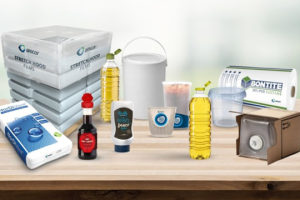The AFGC's Tanya Barden highlighted the impact of export growth on the food and grocery sector in Australia on her visit to Auspack this week.
Barden, who is the director of economics and sustainability at the Australian Food and Grocery Council (AFGC) and chair of the Australian Packaging Covenant (APC), shared key trends within the food and beverage sector at Auspack’s National Technical Forums this week as part of the packaging and processing trade show in Sydney.
Barden says the food beverage and grocery manufacturing sector is worth $126 billion, creating 307,000 jobs for Australians.
It has also created $31.5 billion in exports, which is where our biggest growth prospects currently lie.
The falling Australian dollar, combined with improved market access provided by free trade agreements, has driven export growth.
“There is opportunity there, but Australia is hampered by challenges in our low-growth domestic market,” Barden says.
“Intense retail competition has meant the duopoly of Coles and Woolworths has been challenged by the entry of Aldi and Costco.
“A shift towards everyday low pricing has perpetuated the trend of retail price deflation.
“So there is hope – and opportunities emerging – but also some domestic constraints.”
According to Barden, food, beverage and grocery turnover increased by 3.9 per cent in 2014-2015, but the bigger growth prospects lie in exports – which saw a 14 per cent growth spike in 2015-2016.
One major concern, however, is the 14.2 per cent fall in capital investment in 2014-15.
Retail price deflation and sluggish local growth is leading a focus on cost-out projects rather than growth-focused capital investment.
Barden was able to break down where the shifts have been as part of her talk.
“Meat and meat product manufacturing has seen 13.4 per cent growth of late, but this will be difficult to maintain due to recent drought conditions,” she says.
“There’s also been a decline in dairy product manufacturing due to a shift in thinking about milk and other dairy foods.”
Australia’s role as an exporter of value-added products is a key focus for the industry, with fruit and vegetable processors working hard to meet demand.
Fresh facts about food and grocery in 2017
• Millennials now make up seven per cent of Australian purchasers, are believed to be worth 12 per cent of the market by 2021.
• Rising energy costs and a new round of intense retail competition have created uncertainty of late.
• Rising protectionism in the global trading environment and a political environment that’s not conducive to an economic reform agenda has influenced some global shifts.
• New regulations such as HSR, CooL, and Container Deposit Schemes have added costs to the industry.
• When it comes to sustainability-based purchases, consumers are “high on intent and low on realisation” – while consumers say sustainability is important to them, it’s not reflected in their purchasing habits yet.






